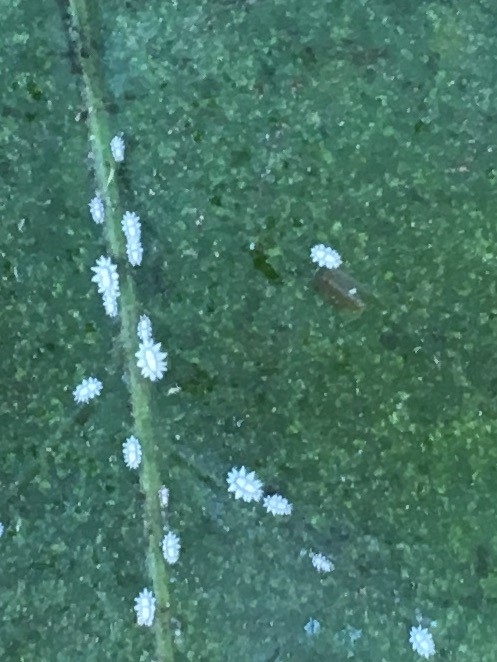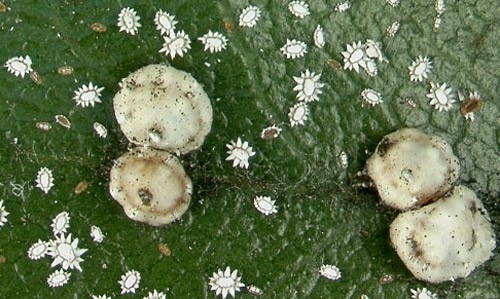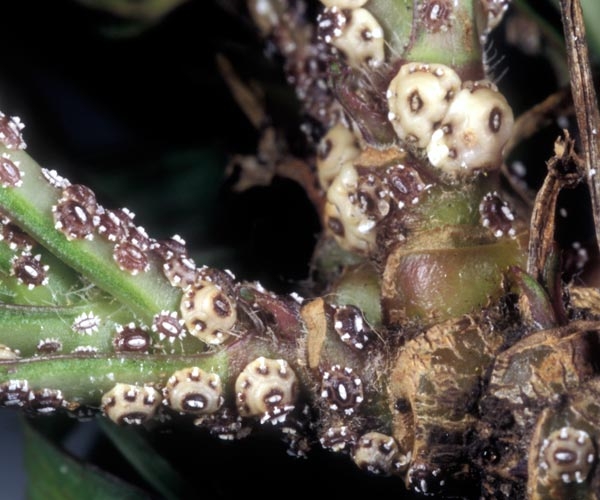Recently a grower called up with a beautiful scale that the PCA couldn't identify. I could just marvel at the beauty of it and wondered what in the heck it was. It didn't look like any scale I had seen in the area and others who were queried didn't know either.
I took it into the Ag Commissioner's office and they sent it off to see if it was a new species. Images were sent off to various entomologists and David Haviland in Bakersfield identified it as a Ceroplastes, possibly a Chinese wax scale or Barnacle scale. Others had identified it as Florida wax scale.
It was sent into Paul Rugman-Jones at UC Riverside Entomology for DNA identification. His identification and that of CA Dept of Food and Ag entolomogists came back as Barnacle scale, Ceroplastes cirripediformis.
All of these scales turned out to have been seen in California before, so there was no quarantine issue. It also turned out that all of the adults that were turned in for identification had also been parasitized by some wasp. So there is biological control already in place for it. The issue at stake here, though, is that it's important to be watching for new visitors in the orchard. Joe Morse now retired from UC Riverside Entomology lead a team that intercepted avocados coming into the US. They found a number of scale insects that were new to California and new to the identification world. A number of these scale are parthenogenic, meaning they can reproduce without males, and just one lone female could possible balloon into a massive population in a short time. And on a scale like that, trees would have a hard time without some serious intervention.


